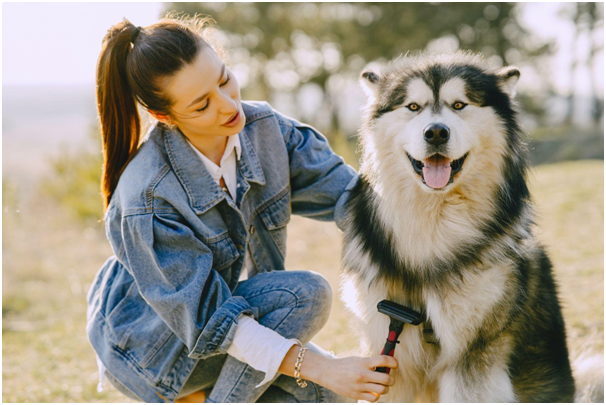Introduction
Deshedding is an important grooming practice that is often overlooked. Many fur parents are unaware of the benefits of deshedding, or how to properly deshed their dog.
Deshedding can help reduce allergies, maintain a healthy coat and skin, and keep your home free of excess hair. In this article, We will share everything you need to know about deshedding and why you should consistently do it.
What is Deshedding?
Deshedding is the process of removing dead, loose fur from your dog’s coat. It helps keep your buddy’s coat looking shiny and healthy, as well as reducing allergens in your home. Deshedding can also help prevent matting and tangling in longer haired breeds.
Why Should I Deshed My Dog?
Regular deshedding can benefit both you and your pup in several ways:
- Reduces allergens: Shed fur contains dander which can trigger allergies in humans and pets alike. By regularly removing shed fur, you can reduce the amount of allergens in the air.
- Prevents matting: Regular brushing helps remove any mats or tangles before they become too difficult to get out on their own. This keeps your pup’s coat looking neat and prevents painful mats from forming on their skin.
- Keeps fur clean: Brushing out shed fur helps keep dirt, debris, and bacteria away from your pup’s skin which can lead to infections if not removed properly.
How Often Should I Deshed My Dog?
The frequency of deshedding depends on several factors such as breed type, age, health conditions, and environment. Generally speaking, short-haired dogs should be brushed at least once a week while long-haired breeds like Mini Groodles may need more frequent brushing (up to 3 times a week).
Additionally, some dogs may require more frequent brushing during shedding season or if they have any medical conditions that require extra care (such as allergies or skin problems). It is best to consult with your veterinarian for specific recommendations regarding your pup’s individual needs.
What Type Of Brush Is Best For Deshedding?
The type of brush you use for deshedding will depend on the length and texture of your pup’s coat. Short-haired dogs usually do well with a rubber curry comb or slicker brush while long-coated breeds may need an undercoat rake or pin brush for deeper penetration into the coat.
It is important to choose a brush that is specifically designed for deshedding so that it does not damage the fur or irritate the skin by pulling too hard during brushing sessions. Additionally, make sure you always use gentle strokes when brushing so that it does not hurt your pup.
How Do I De-shed My Dog Properly?
When it comes time to actually deshedding your pooch there are a few steps you should follow:
1) Start by brushing out any tangles using either a rubber curry comb or slicker brush depending on their coat length/texture (as mentioned above).
2) Once all tangles are removed begin using an undercoat rake or pin brush depending on their length/texture (as mentioned above) and work in sections starting at the head then moving down towards the tail area making sure each section is thoroughly brushed before moving onto another area.
3) Make sure to always brush gently and avoid tugging at any areas with excessive amounts of fur – tugging could cause discomfort for your pup.
4) After each session check for any mats or tangles that may have formed during the brushing process and use either a wide-toothed comb or scissors (if needed) to carefully remove them without causing pain to your pup.
Conclusion
Deshinging is an important part of pet grooming that should not be overlooked! Regularly removing dead hair from your pup’s coat will help keep them healthy by reducing allergens in their environment as well as mattes and tangles in their fur which can cause discomfort if left untreated over time.
Be sure to consult with your veterinarian beforehand if you have any questions about deshedding, its frequency, or types of brushes needed for your particular breed or situation – they will be able to provide you with the best advice for keeping your dog happy and healthy.

